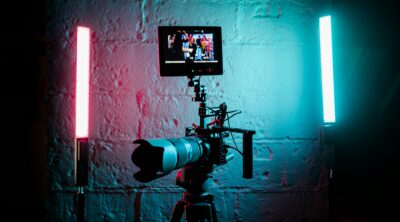< Back to all posts
10 Tips for Creating Terrific Testimonial Videos
You might think a testimonial video should be easy to throw together – just get a camera, point it at an interviewee, and let him or her talk. But if that were true, we wouldn’t see all those awkward or cringeworthy testimonial videos on TV or the internet, right?
Creating an effective testimonial video requires a great deal of preparation and flawless execution. Here are ten tips on how to accomplish this task:
1. Identify what you want to accomplish with your testimonial video.
Do you want a single person to be interviewed or multiple different testimonials? Do you want to spotlight your company’s customer service, its turnkey approach to client accounts, its superior product quality, its efficiency, or some combination of these (or other core competencies)? If you don’t know what the goal is, your testimonial message probably won’t be clear to viewers.
2. Choose the right interviewee(s).
Try to find someone on whom your products or services have had a significant and measurable impact. Examples could include a client who lowered her overhead costs by 20% using your software or a customer who has expanded his business thanks to the quality of your metal supplies. If possible, try to find someone who is an industry leader or influencer. Finally, double-check with your company’s legal team and the individual to ensure that you are approved to use the interview footage in any manner you choose.
3. Write down several targeted yet open-ended questions.
The purpose of these questions should be to coax the desired answers and information from the person giving the testimonial, but these responses should be in the subject’s own words. So the questions shouldn’t be too general (“How have our products helped your business?”) or too specific (“Did your profits increase and your productivity improve once you used our software?”). Make them just focused enough to spur the interviewee to tell his or her story (“What did you notice when you first began using our product, and what impact did it have on your bottom line?”)
4. Prepare the person you have chosen to be interviewed.
Start by showing him or her the questions you have come up with. Then sometime before you’re ready to begin recording footage, sit down and have a conversation with the interviewee about the testimonial. This will help him or her formulate responses to your questions, and you can nudge the person toward the message that you want to emerge from the video. Don’t worry about trying to conduct a “pre-interview;” too much rehearsal can make the interview appear forced or insincere.
5. Select the proper set or background.
It’s important to provide some context for the testimonial, which is why you should probably avoid staging the video on a generic studio set. Instead, you could show the interviewee in his or her office or workspace, or perhaps outdoors in a setting which highlights the customer’s geographical location. Another idea is to set up the testimonial at your own company in an area where you would normally conduct business, like in a conference room or at a salesperson’s desk or office.

6. Discourage over-preparedness on the part of the interviewee.
Tell the person not to memorize any lines; otherwise, the testimonial is likely to appear unauthentic and robotic. It’s OK to call attention to a few phrases or bullet points that you’d like to get across in the video (such as “Our return rate dropped 5%” or “The product implementation was seamless”). Also, be aware of any nervousness from your interviewee about appearing on camera, and feel free to provide advice on dress, body positioning, or any other concerns that he or she might have.
7. Extol benefits; don’t describe features.
Other marketing channels and tactics can list and discuss the details of your product or service, but a testimonial is supposed to reveal how someone was helped by what they purchased from your company. So instead of concentrating on how a software product is “twice as fast as anything in its field,” the video should highlight a customer’s increased productivity or the additional time that has been freed up to work on something else. Similarly, interviewees shouldn’t say, “I like the fact that they have 24/7 customer support;” instead, they should talk about how the time they were on a Monday morning deadline and your company fixed their problem after midnight on Sunday.
8. Encourage a lengthy conversation.
Don’t try to limit the video recording session to a few succinct questions and answers. Instead, allow the interviewee to elaborate on his or her responses, and foster an atmosphere of a “casual chat” while the cameras roll. Sure, you may not use a great deal of what is said in the final video, but you can piece together the most powerful portions of your subject’s responses during the editing process – and everything the interviewee says is likely to appear more relaxed and genuine.

9. Edit the video to maximize the impact of the message.
In any marketing tactic, the key is to capture the audience’s attention quickly. The same is true for a testimonial video, which is why you shouldn’t spend the first 45 seconds of the video listing company information or product features. One way to approach a testimonial is the 30-30-30 rule: thirty seconds to introduce the interviewee, thirty seconds to outline his or her problem, and 30 seconds to describe how your company’s product or service solved that problem.
10. Use b-roll strategically.
B-roll is an industry term for non-interview footage of related activity that can be shown onscreen while the voice of your interviewee is being heard. Video clips of the individual working at his or her craft, talking with your company executives, or interacting with his or her employees help complement the testimonial that is being given. Plus, b-roll can be used to link non-consecutive audio clips together seamlessly.
Are you surprised at how much effort goes into making a testimonial video? That’s why it’s essential to partner with a professional video production company which has the experience and expertise to create a finished product that you can be proud of. So if you have wonderful customers or clients, why not let them sing your praises in a testimonial video?
For more tips on testimonial videos, sign up for our newsletter.







Leave a Reply